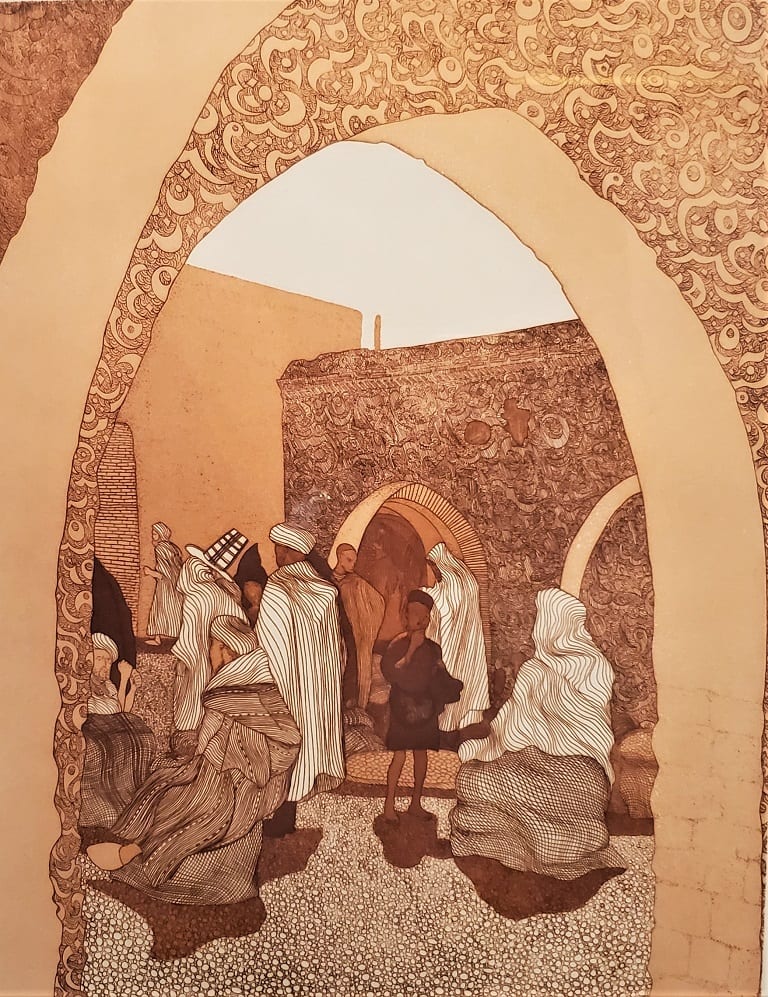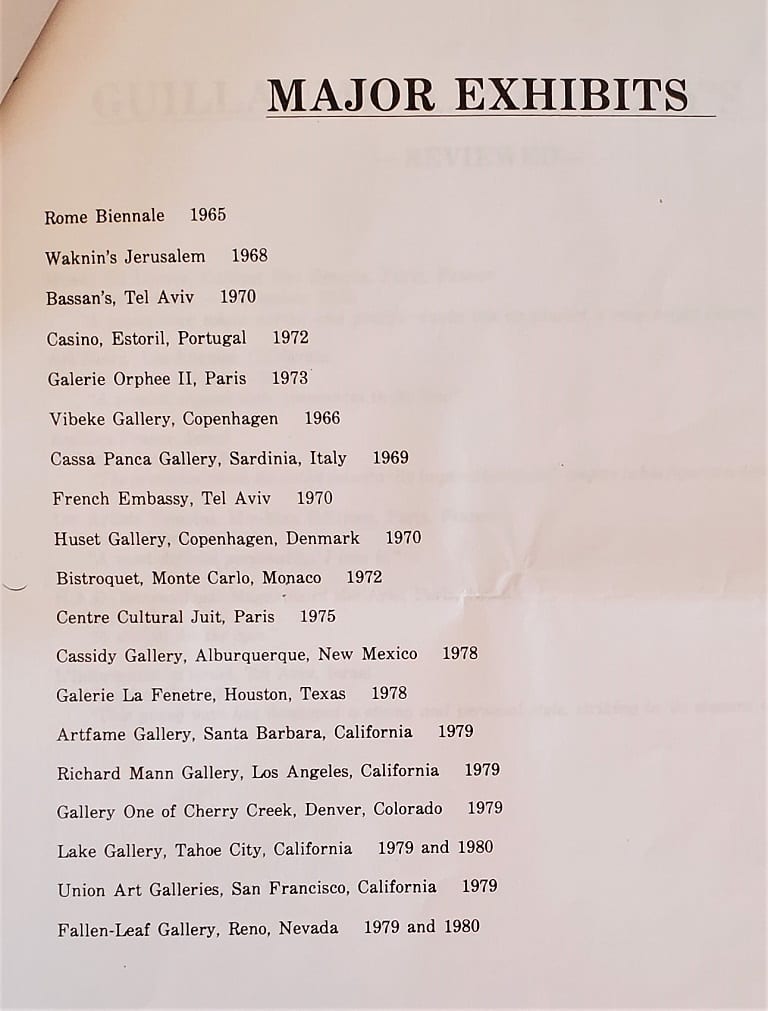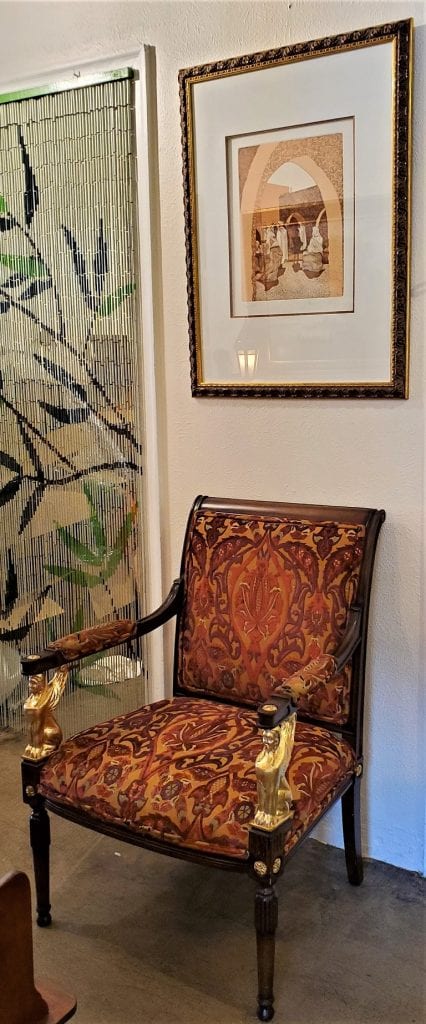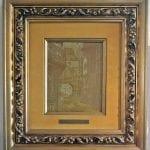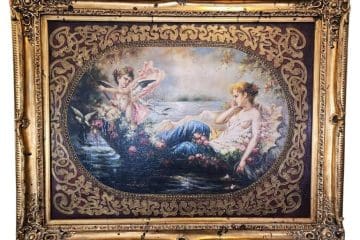The Souk Limited Edition Etching by Azoulay Guillaume
PRESENTING a LOVELY Limited Edition Etching, namely, “The Souk” Limited Edition Etching by Azoulay Guillaume.
From 1982 the etching is numbered and signed in pencil.
It is numbered 101/300.
By renowned contemporary Moroccan Artist, Azoulay Guillaume, the etching features a classic Moroccan scene of a ‘souk’.
Framed and under glass.
Guillaume Azoulay was born in Casablanca, Morocco in 1949. Since age thirteen, Azoulay’s thirst for adventure has taken him to many parts of the world, earning his way by painting and performing as an actor.
Azoulay met his wife Charmine Seal, noted Welsh ballerina, in Israel, and in 1976 they arrived in the United States. In this short time span, Azoulay has worked to establish himself as an American etcher.
In 1983, Azoulay was chosen to create the official Kentucky Derby Festival Poster. He was challenged by the thought of creating image that combined his love of horses with the excitement of the world’s greatest horse races. His latest series of etchings are intended to capture the spirit and vitality of racing’s most important competitions: Kentucky Derby, Preakness, and the Belmont.
Included in the artist’s achievements are the acceptance of seven of his works in the permanent collection of the Musee Du Louvre (Cabinet Des Dessins). His work is in the private collections of President Ronald Reagan, His Majesty King Hassan II of Morocco, President Francois Mitterand of France and the late President Sadat of Egypt. Several works by Azoulay are in the Nelson Rockefeller Collection.
An early critique of Azoulay’s said of him that he is “a young man whose varied and prolific work lets us predict a very bright future.” (Mr. Daniel Serrulaz Chief Curator Musee Du Louvre, 1978)
Major Exhibits:
Rome Biennale, Rome, Italy 1965
Cassa Panca Gallery, Sardinia, Italy 1969
Huset Gallery, Copenhagen, Denmark 1970
Gallerie Orphee II, Paris, France 1973
Centre Culturel Juif, Paris, France 1975
Cassidy Gallery, Albuquerque, New Mexico 1978
Galerie La Fenetre, Houston, Texas 1978
Wash’Art, Washington, D.C. 1978, 1979, 1980, 1981
American Design, New Orleans, Louisiana 1979
Lake Gallery, Tahoe City, California 1979,1980
Union Art Gallery, San Francisco, California 1979
Fallen Leaf Gallery, Reno, Nevada 1979, 1980
Gallery One, Denver, Colorado 1979
Richard Mann Gallery, Los Angeles, California 1979
Prints 800, Los Angeles, California 1980
Towne Plaza Gallery, Beverly Hills, California 1981
Towne Plaza Gallery, Mission Viejo, California 1981
New York Art Show, New York, New York 1981
Art Expo West, Los Angeles, California 1981
Hanson Galleries, New Orleans, Louisiana 1981
Gallery One, Cherry Creek, Denver, Colorado 1981,1983
John Miller Gallery, Carmel, California 1981
Art Expo, San Francisco, California 1981
Martha White Gallery, Louisville, Kentucky 1983
A bazaar or souk, is a permanently enclosed marketplace or street where goods and services are exchanged or sold.
The term bazaar originates from the Persian word bāzār. The term bazaar is sometimes also used to refer to the “network of merchants, bankers and craftsmen” who work in that area. Although the word “bazaar” is of Persian origin, its use has spread and now has been accepted into the vernacular in countries around the world.
The term souk (Arabic: سوق suq, Hebrew: שוק shuq, Syriac: ܫܘܩܐ shuqa, Armenian: շուկա shuka, Spanish: zoco, also spelled souq, shuk, shooq, soq, esouk, succ, suk, sooq, suq, soek) is used in Western Asian, North African and some Horn African cities (Amharic: ሱቅ sooq).[1][2]
Evidence for the existence of bazaars or souks dates to around 3,000 BCE. Although the lack of archaeological evidence has limited detailed studies of the evolution of bazaars, indications suggest that they initially developed outside city walls where they were often associated with servicing the needs of caravanserai. As towns and cities became more populous, these bazaars moved into the city center and developed in a linear pattern along streets stretching from one city gate to another gate on the opposite side of the city. Souks became covered walkways. Over time, these bazaars formed a network of trading centres which allowed for the exchange of produce and information. The rise of large bazaars and stock trading centres in the Muslim world allowed the creation of new capitals and eventually new empires. New and wealthy cities such as Isfahan, Golconda, Samarkand, Cairo, Baghdad and Timbuktu were founded along trade routes and bazaars. Street markets are the European and North American equivalents.
In the 18th and 19th centuries, Western interest in Oriental culture led to the publication of many books about daily life in Middle Eastern countries. Souks, bazaars and the trappings of trade feature prominently in paintings and engravings, works of fiction and travel writing.
Shopping at a bazaar or market-place remains a central feature of daily life in many Middle-Eastern and South Asian cities and towns and the bazaar remains the “beating heart” of West Asian and South Asian life; in the Middle East, souks tend to be found in a city’s medina (old quarter). Bazaars and souks are often important tourist attractions. A number of bazaar districts have been listed as World Heritage sites due to their historical and/or architectural significance.
Link: https://en.wikipedia.org/wiki/Bazaar
The Souk Limited Edition Etching by Azoulay Guillaume
Provenance: From the Private Collection of a Former Manhattan Art Dealer.
Condition: Excellent.
Dimensions: The Frame is 33 inches tall, 25.25 inches wide and 1 inch deep.
SALE PRICE NOW: $2,800















